Introduction
In the field of industrial automation, two critical control systems are often discussed: DCS (Distributed Control System) and PLC (Programmable Logic Controller). Both play essential roles in modern industries, each with its unique features and advantages. Understanding the differences between these two systems is crucial for selecting the appropriate one for specific applications. This article will provide a detailed comparison of DCS and PLC across various dimensions, helping you make an informed choice.
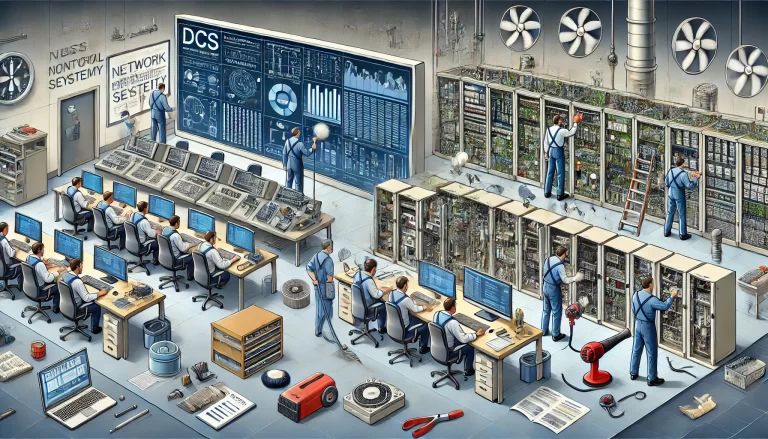
Definitions and Core Differences
DCS: The Concept and Architecture of a Distributed Control System
A DCS is an integrated control system based on computer technology, control techniques, communication, and display technologies. It operates on the principle of “distributed control with centralized management.” The system typically consists of multiple distributed controllers, communication networks, operator stations, and engineering stations. Each controller manages a local process in real-time, while the entire system communicates over a high-speed, reliable network, ensuring smooth data exchange.
An operator station provides an intuitive interface for operators to monitor and control the entire production process, while the engineer station is used for system configuration, program development, parameter adjustments, and maintenance.
PLC: The Programmable Logic Controller
A PLC is a digital computing device specifically designed for industrial applications. It evolved from traditional relay control systems and can perform logical operations, sequential control, timing, counting, and arithmetic operations. A PLC usually features a modular or compact design, making it easy to install and maintain. Its hardware includes a CPU, memory, input/output interfaces (I/O), and power supply, while software programming can be done using ladder diagrams, instruction lists, or function block diagrams.
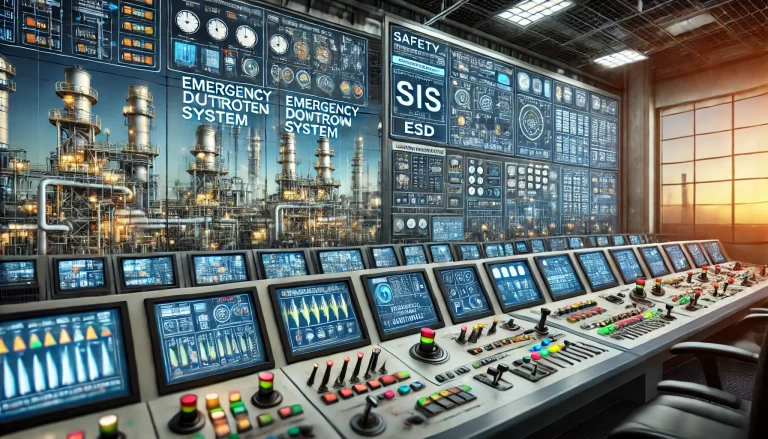
The Core Difference: System vs. Device
In essence, DCS is a complete industrial control system that emphasizes centralized management and coordination. It connects several controllers across a facility to form an integrated, cohesive system. PLC, on the other hand, is a control device that focuses on managing specific machines or localized production steps. It serves as a fundamental building block of a control system.
Communication and Networking
DCS Network: Features and Advantages
The DCS network is the backbone of the entire system, designed for high reliability and robustness. Typically, DCS systems use redundant designs to ensure constant communication. For example, redundant communication links provide backup in case one link fails, and redundant nodes allow other controllers to take over if a failure occurs. This level of redundancy ensures uninterrupted system performance.
DCS networks employ high-performance protocols like Foundation Fieldbus (FF) and Profibus, providing excellent compatibility and scalability. These networks are often designed in tree or star topologies, which simplify maintenance and management. Additionally, DCS networks allow rapid data collection, processing, and sharing, providing efficient human-machine interfaces (HMIs) and data analysis tools.
PLC Network: Characteristics and Limitations
PLC networks are more diverse and can be tailored based on the size and complexity of the application. In smaller PLC systems, simple network configurations are used, often based on proprietary or general industrial Ethernet protocols. While these private protocols can ensure stable communication, they may limit the system’s integration with external devices or other systems.
As the number of PLCs in a system increases, communication becomes more complex. Distributed PLC systems may struggle with cross-PLC communication and coordination. This limits their ability to manage large-scale systems and coordinate tasks as efficiently as DCS systems.
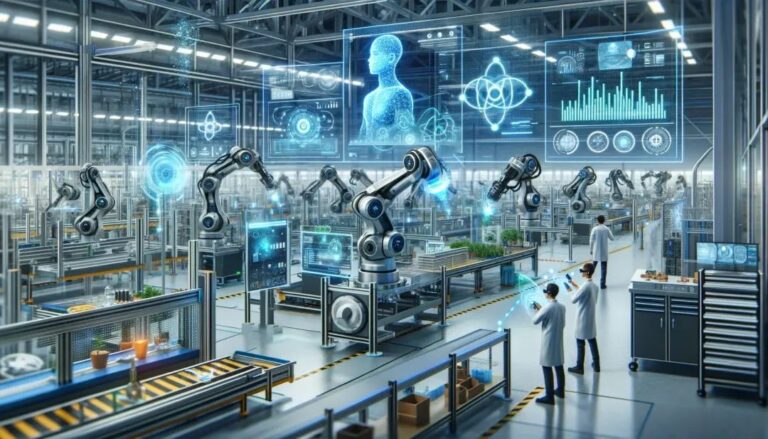
System Integration and Coordination
DCS: Tight Integration and Coordinated Control
One of DCS’s strengths lies in its comprehensive coordination and control across the entire production process. In large-scale operations like chemical plants or power stations, DCS coordinates various equipment, such as reactors, tanks, and valves. If any parameter, such as temperature or pressure, deviates from the setpoint, the DCS system can automatically adjust other equipment to maintain the desired conditions. This interconnected control improves system safety and efficiency.
PLC: Loose Integration and Coordination Challenges
In contrast, PLC systems typically work with a looser integration. While individual PLCs control specific tasks locally, they struggle with real-time coordination and global optimization. For example, in a manufacturing line with multiple independent PLCs, achieving seamless communication and control across all units may be challenging. While PLCs are well-suited for localized control, they are not designed for managing complex, large-scale systems that require tight coordination.
Scalability and Flexibility
DCS: Open for Expansion and Easy Maintenance
DCS systems are designed with scalability in mind. They have built-in interfaces to add additional controllers, sensors, or actuators as production demands evolve. This flexibility allows companies to easily adapt their systems as their manufacturing processes expand or change.
For example, in a growing factory, new production lines or changes in process can be integrated into the DCS without major disruptions. The system can handle upgrades and reconfigurations efficiently, providing long-term value and adaptability.
PLC: Expansion Challenges and Higher Costs
Expanding a PLC system can be more complicated. Once a PLC system is installed, adding new components often requires significant reprogramming and hardware adjustments. For example, new operator stations might require careful configuration, and program updates must be compiled and transferred to the appropriate PLCs. This process can be time-consuming, increasing both the complexity and the cost of expansion.
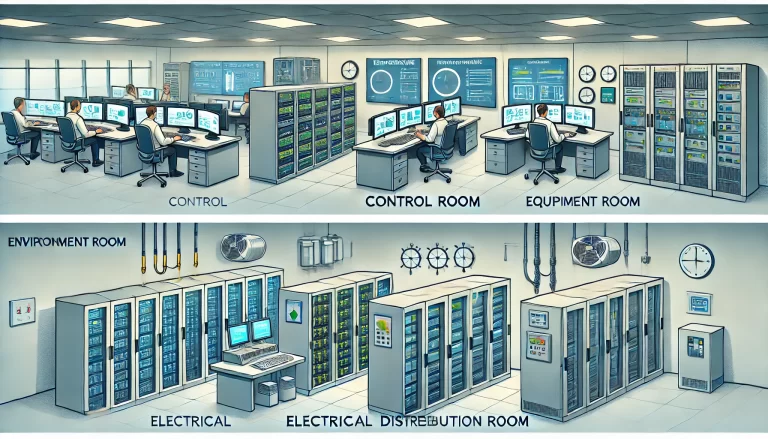
Reliability and Redundancy
DCS: Redundancy for High Reliability
DCS systems are designed for high reliability, employing redundant control units, power supplies, CPUs, and communication networks. This redundancy ensures that if a component fails, another can seamlessly take over, minimizing system downtime and maintaining consistent operation. This design is particularly important in industries where continuous production is crucial, such as power generation or chemical processing.
PLC: Lower Redundancy and Maintenance Complexity
In contrast, PLC systems often lack redundancy. If a PLC unit fails, the system may need to be shut down for maintenance, which can disrupt production. This makes PLCs less ideal for applications where uptime is critical. Furthermore, troubleshooting and repairing PLC systems can be more complex compared to DCS systems, as PLCs often require specific expertise and equipment for repairs.
Control Precision and Software
DCS: Advanced Control Software and Precision
DCS systems are equipped with sophisticated software capable of managing complex control algorithms. This enables fine-tuned control of processes like temperature, pressure, and flow rates. In industries like pharmaceuticals or fine chemicals, precise control is critical to maintaining product quality. DCS systems also support real-time monitoring, allowing engineers to optimize processes based on historical and live data.
PLC: Limited Control and Software Capabilities
PLCs, while capable of performing logic-based control and simple arithmetic, may struggle with complex control algorithms and high-precision tasks. The programming and updating process for PLCs can also be labor-intensive, as each controller must be updated individually. While PLCs work well for discrete control tasks, they are less suited for industries where precision and complex process management are required.
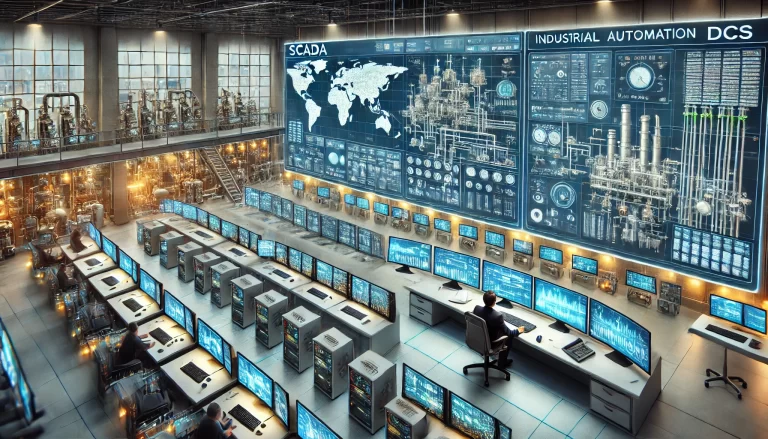
Application Areas and Industries
DCS: Best Suited for Large-Scale Continuous Processes
DCS systems excel in industries with continuous production processes, such as petrochemical, power generation, steel production, and pharmaceuticals. These industries involve complex and interconnected processes that require precise coordination across multiple devices. DCS systems’ ability to manage large, interconnected processes makes them the ideal choice for these environments.
For example, in a petrochemical plant, DCS systems monitor and control reactors, separators, and pipelines in real-time to ensure that each stage of the production process runs efficiently and safely.
PLC: Ideal for Discrete Control and Smaller Systems
PLCs are more suitable for industries that involve discrete manufacturing, such as automotive assembly, packaging, and electronics. In these environments, PLCs control individual machines or processes that do not require the complex interconnectivity seen in larger systems. The modular nature of PLCs makes them ideal for small to medium-sized production lines, where flexibility and ease of programming are essential.
Cost and Return on Investment
PLC: Low Initial Cost, but Higher Long-Term Maintenance Costs
PLC systems typically have a lower initial investment, making them an attractive option for small-scale or less complex projects. However, as the system expands, the costs for maintenance, programming, and system integration increase. Additionally, older PLC systems may face compatibility issues when integrating with newer technologies.
DCS: Higher Initial Investment, but Better Long-Term Value
While DCS systems have a higher upfront cost, their long-term value is significant. The system’s scalability, reliability, and ability to optimize production processes provide a higher return on investment over time. For large-scale operations, DCS systems minimize downtime and improve operational efficiency, leading to substantial cost savings in the long run.
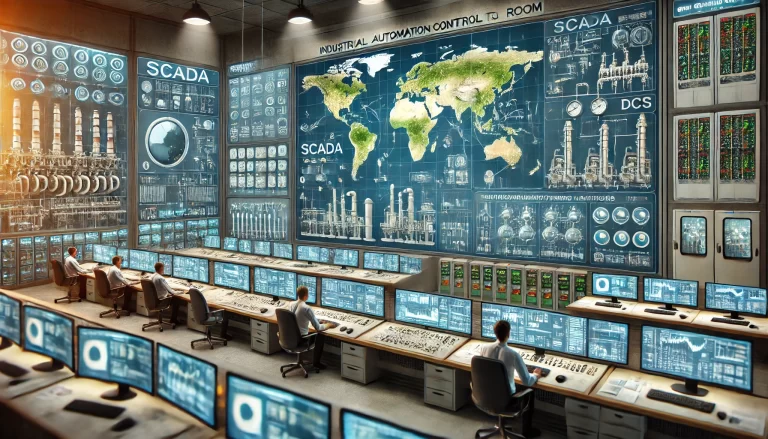
Future Trends
DCS: Moving Toward Greater Intelligence and Integration
With the rise of Industry 4.0, DCS systems are becoming more intelligent and integrated. Advanced technologies like AI, machine learning, and big data analytics are being incorporated into DCS systems to improve predictive maintenance and process optimization. Additionally, DCS systems are increasingly interconnected with the industrial internet and IoT technologies, enabling real-time data sharing across multiple systems.
PLC: Increasing Software Integration and Hybrid Solutions
PLC systems are also evolving, with some models now offering features traditionally found in DCS systems. These include enhanced network capabilities and distributed control. Furthermore, PLC software is becoming more sophisticated, with integration into cloud platforms and more flexible programming options.

Conclusion
While both DCS and PLC systems are crucial to industrial automation, they serve different purposes. DCS is a comprehensive system designed for large, complex processes that require tight coordination and real-time optimization. PLC, on the other hand, is better suited for discrete control tasks and smaller-scale systems. Depending on the specific needs of a production environment, businesses may choose either DCS, PLC, or a hybrid solution to achieve optimal performance and efficiency.
